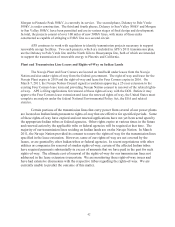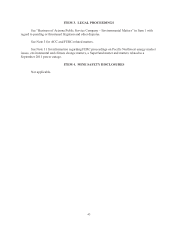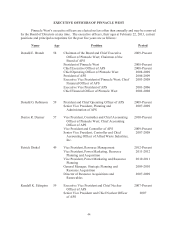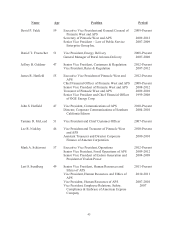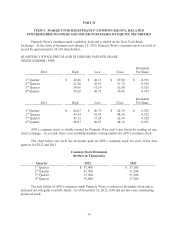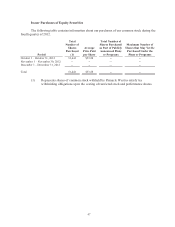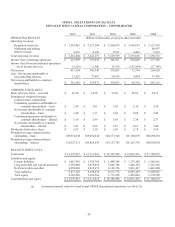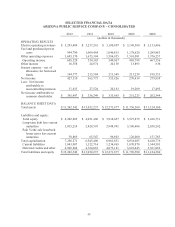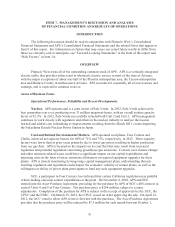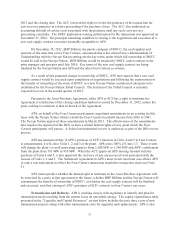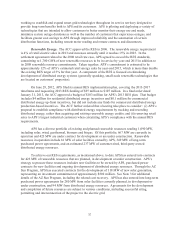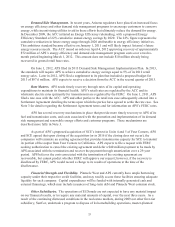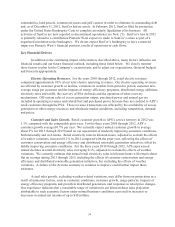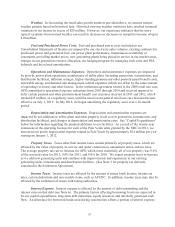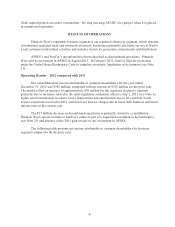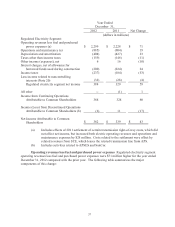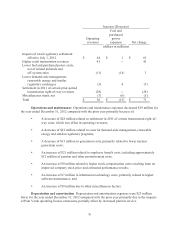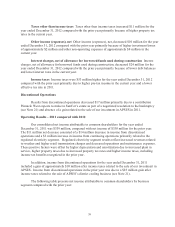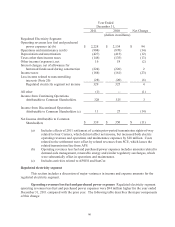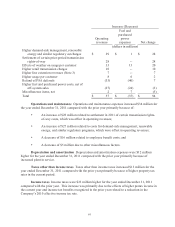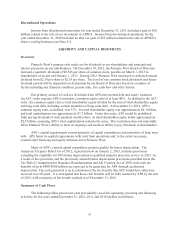APS 2012 Annual Report Download - page 76
Download and view the complete annual report
Please find page 76 of the 2012 APS annual report below. You can navigate through the pages in the report by either clicking on the pages listed below, or by using the keyword search tool below to find specific information within the annual report.52
working to establish and expand smart grid technologies throughout its service territory designed to
provide long-term benefits both to APS and its customers. APS is piloting and deploying a variety of
technologies that are intended to allow customers to better monitor their energy use and needs,
minimize system outage durations as well as the number of customers that experience outages, and
facilitate greater cost savings to APS through improved reliability and the automation of certain
distribution functions, including remote meter reading and remote connects and disconnects.
Renewable Energy. The ACC approved the RES in 2006. The renewable energy requirement
is 4% of retail electric sales in 2013 and increases annually until it reaches 15% in 2025. In the
settlement agreement related to the 2008 retail rate case, APS agreed to exceed the RES standards,
committing to 1,700 GWh of new renewable resources to be in service by year-end 2015 in addition to
its 2008 renewable resource commitments. Taken together, APS’s commitment is estimated to be
approximately 12% of APS’s estimated retail energy sales by year-end 2015, which is more than double
the existing RES target of 5% for that year. A component of the RES is focused on stimulating
development of distributed energy systems (generally speaking, small-scale renewable technologies that
are located on customers’ properties).
On June 29, 2012, APS filed its annual RES implementation plan, covering the 2013-2017
timeframe and requesting 2013 RES funding of $97 million to $107 million. In a final order dated
January 31, 2013, the ACC approved a budget of $103 million for APS’s 2013 RES plan. That budget
includes $4 million for residential distributed energy incentives and $0.1 million for commercial
distributed energy up-front incentives, but did not include any funds for commercial distributed energy
production-based incentives. The ACC further ordered that a hearing take place to consider: (i) APS’s
proposal to establish compliance with distributed energy requirements by tracking and recording
distributed energy, rather than acquiring and retiring renewable energy credits; and (ii) removing retail
sales to APS’s largest industrial customers when calculating APS’s compliance with the annual RES
requirements.
APS has a diverse portfolio of existing and planned renewable resources totaling 1,090 MW,
including solar, wind, geothermal, biomass and biogas. Of this portfolio, 667 MW are currently in
operation and 423 MW are under contract for development or are under construction. Renewable
resources in operation include 81 MW of solar facilities owned by APS, 349 MW of long-term
purchased power agreements, and an estimated 237 MW of customer-sited, third-party owned
distributed energy resources.
To achieve our RES requirements, as mentioned above, to date APS has entered into contracts
for 423 MW of renewable resources that are planned, in development or under construction. APS’s
strategy to procure these resources includes new facilities to be owned by APS, purchased power
contracts for new facilities and ongoing development of distributed energy resources. Through the AZ
Sun Program, APS has executed contracts for the development of 118 MW of new solar generation,
representing an investment commitment of approximately $502 million. See Note 3 for additional
details of the AZ Sun Program, including the related cost recovery. APS has also entered into long-term
purchased power agreements for 280 MW from solar facilities currently planned, in development or
under construction, and 94 MW from distributed energy resources. Agreements for the development
and completion of future resources are subject to various conditions, including successful siting,
permitting and interconnection of the project to the electric grid.


